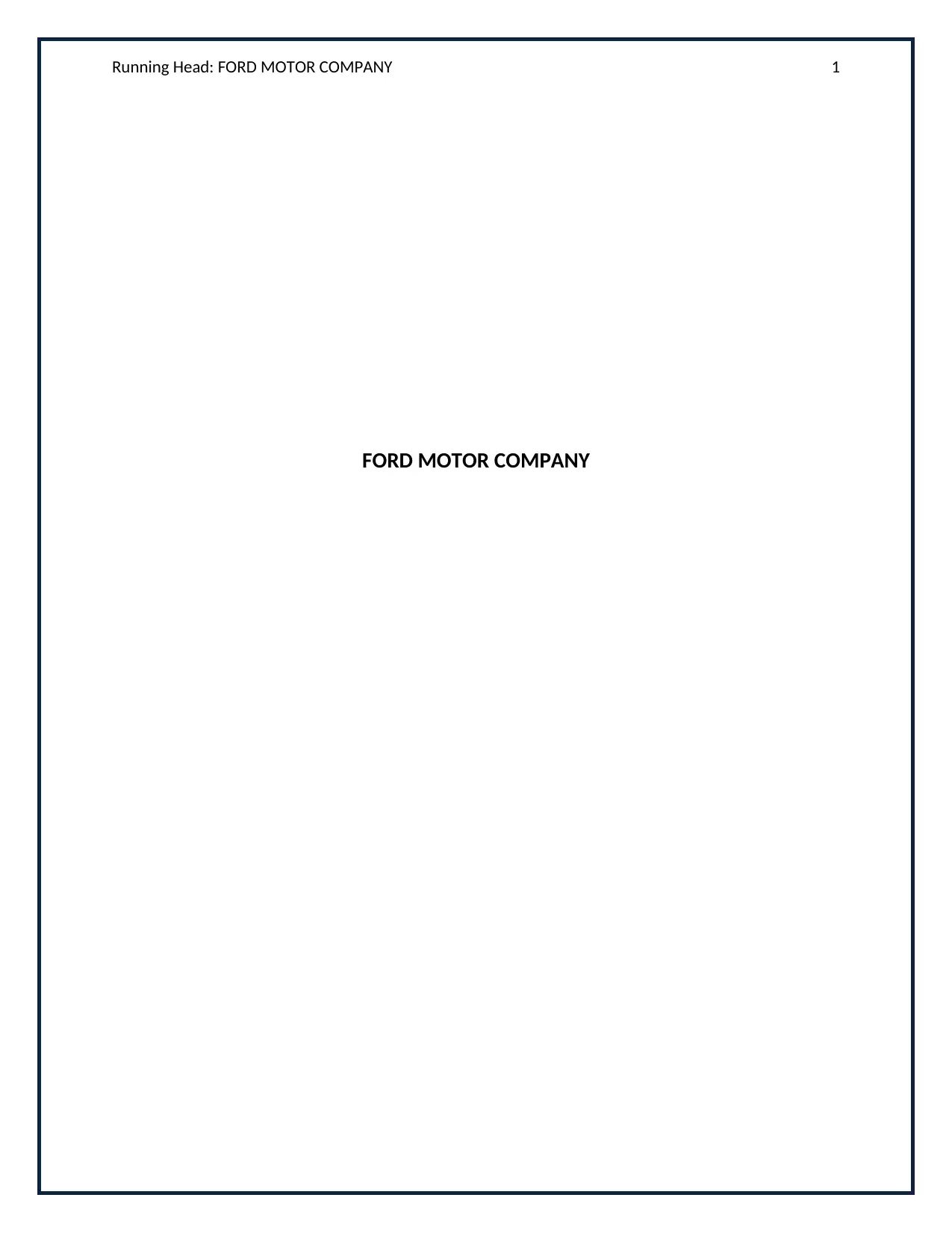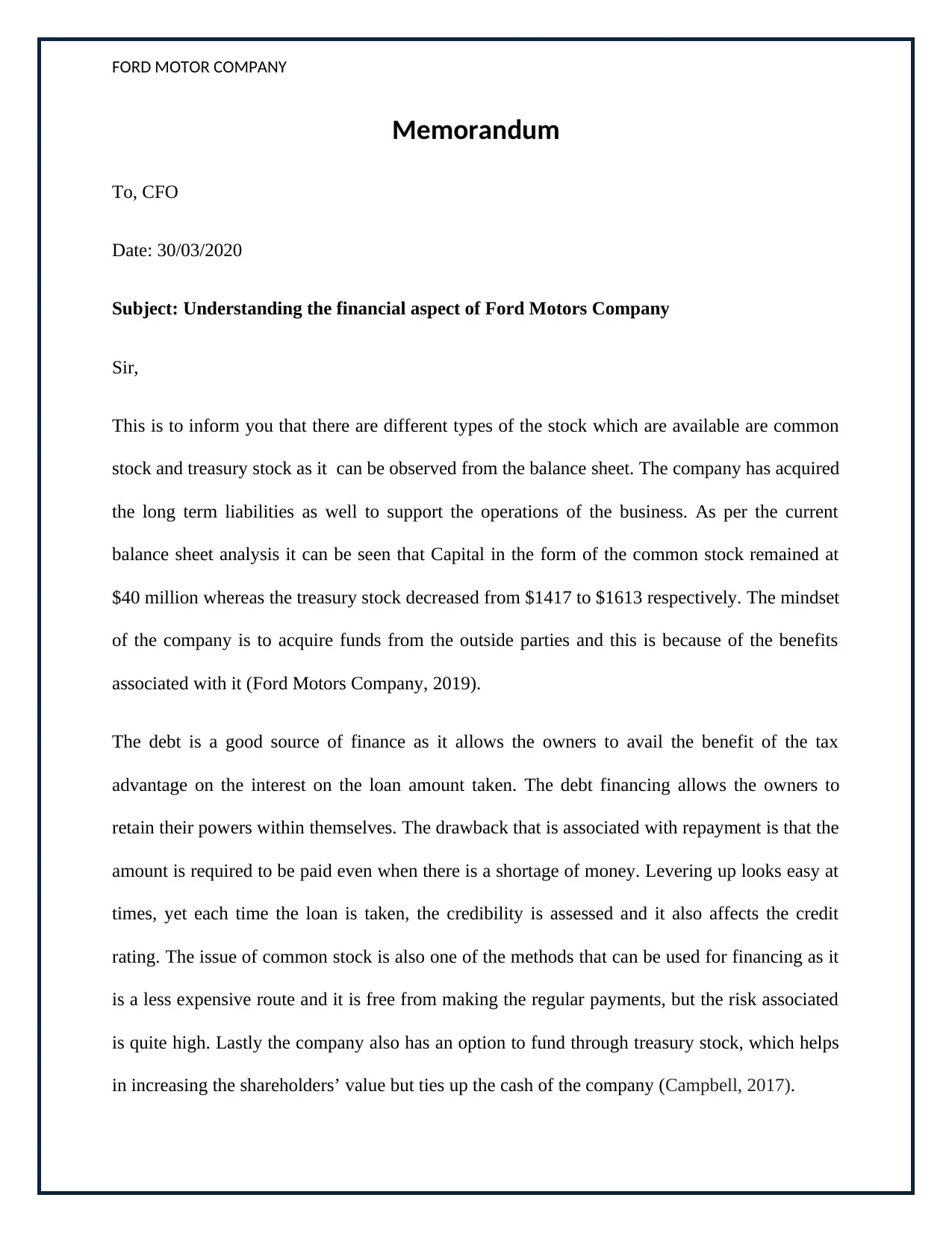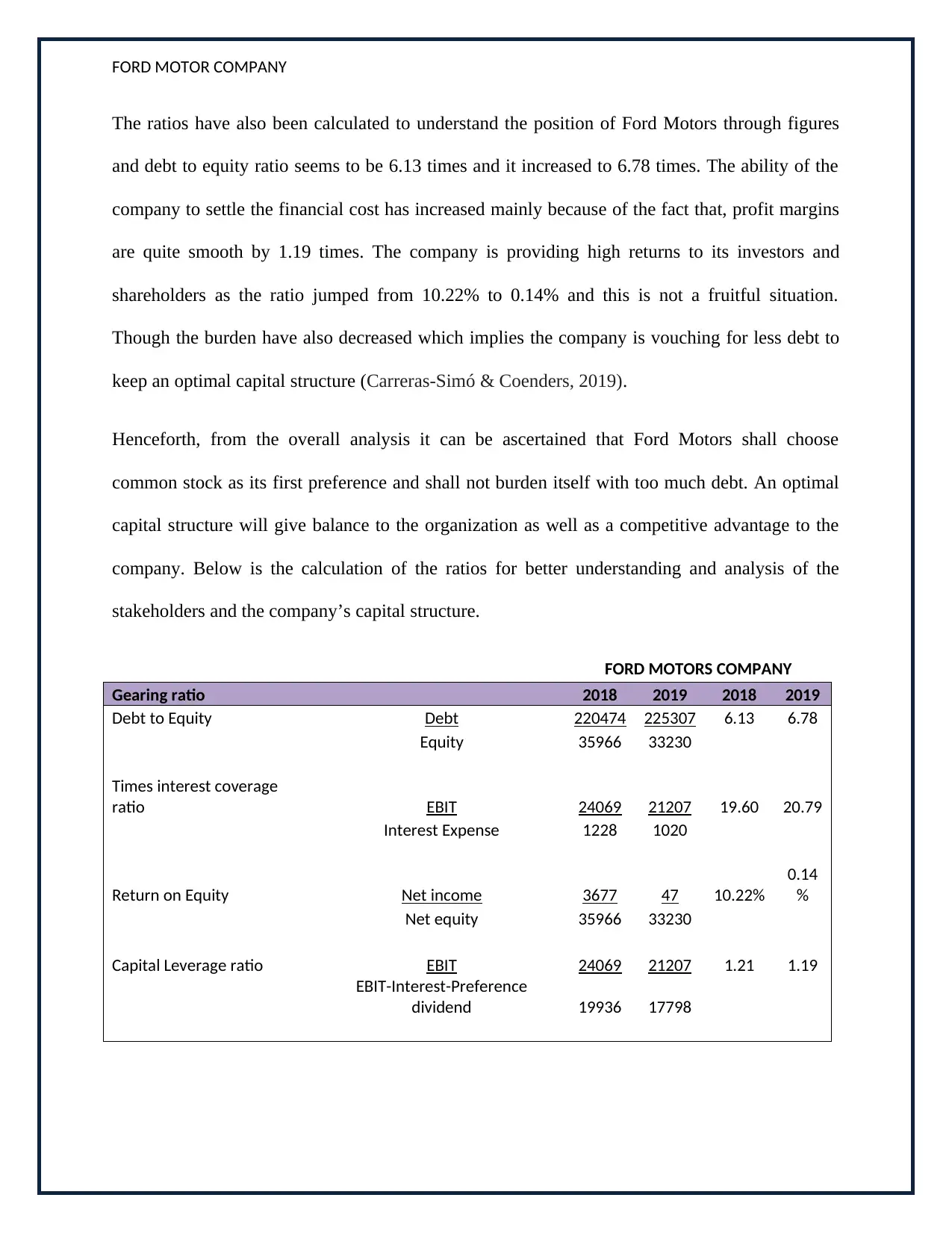Ford Motor Company: Financial Analysis of Stockholders' Equity Report
VerifiedAdded on 2022/09/06
|4
|662
|14
Report
AI Summary
This memorandum analyzes the financial aspects of Ford Motor Company, focusing on stockholders' equity to recommend strategies for cash generation. The analysis includes the types of stock (common and treasury), debt versus equity, and the impact of treasury stock. Key financial ratios, such as debt-to-equity, times interest coverage, capital leverage, and return on equity, are calculated and analyzed to assess the company's financial position. The analysis reveals that Ford should prioritize common stock and maintain an optimal capital structure. The report suggests that the company's ability to manage its financial costs has improved, while also highlighting the need for careful consideration of debt levels and their impact on the company's credit rating and shareholder value. The overall recommendation is to balance financial decisions to maintain competitive advantage and provide value to stakeholders.
1 out of 4











![[object Object]](/_next/static/media/star-bottom.7253800d.svg)